The little chimney was the last bit of the scrambly / climby part of the way up to Aster Lake. From here, it was all easy hiking and beautiful scenery.
A super well-defined path, idyllic in its shape and softness, led off through a stand of nearby larch trees. The path ran - mostly on the level - through alternating patches of small meadows and trees, and in each of the meadows were prolific arrays of mountain wildflowers of all types - paintbrushes, buttercups, heliotropes, etc. At this point one also starts to see the tops of the various surrounding mountains come into view. As I said, probably the prettiest part of the trail.
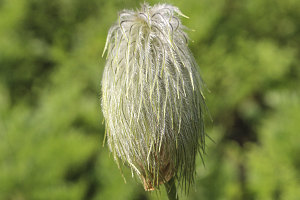
courtesy JInnes
Beginning of beautiful forest section
Limestone Slopes meet Forest
Less than a kilometre of this beautiful mountain trail brought us to a dried-out pond (probably full or at least very wet earlier in the year). The trail skirted around this on some higher terrain, but in retrospect, we could probably have just walked across the dried bed of the pond. Something to try on the way back.
Aster Lake Trail near Foch Creek
After passing the sign for a ranger cabin (which was well hidden, because we could not see it nor a path leading to it), we descended a bit down to the waters of a rushing little mountain stream. The stream was carved into a sort of shallow limestone canyon that was clearly part of the structure of the underlying geology of the area. The trail made a sudden right turn here and followed the left-hand (looking downstream) side of the creek, downhill. This it did for about 200 metres before making an equally sharp left turn and resuming the uphill ascent to the Aster Lake backcountry campground.

courtesy JInnes
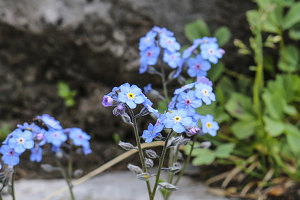
courtesy JInnes
It was not more than fifteen minutes or so of uphill hiking after this sharp left-hander before we spotted a deep green capsule looking thing on the horizon. This was the outhouse of the Aster Lake backcountry campground, signifying that we had arrived.
Before reaching the outhouse and the campground, though, something underfoot attracted our attention: fossils! The last few hundred metres of trail to the backcountry campsite crossed some exposed ledges of bedrock, and these sections of bedrock were filled with marine fossils. Some of these were in extremely good condition and showed great detail. Mostly the fossils seemed to be of species of coral. Looking up the rock unit from the Geological Survey of Canada reveals that this rock unit (designated CHM3, Opal Member of the Upper Unit of the Mount Head Formation, Rundle Group) dates from the Carboniferous period, about 350 million years ago.
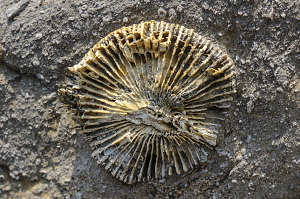
courtesy JInnes
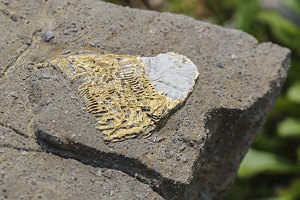
courtesy JInnes

courtesy JInnes
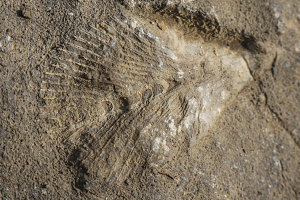
courtesy JInnes

courtesy JInnes